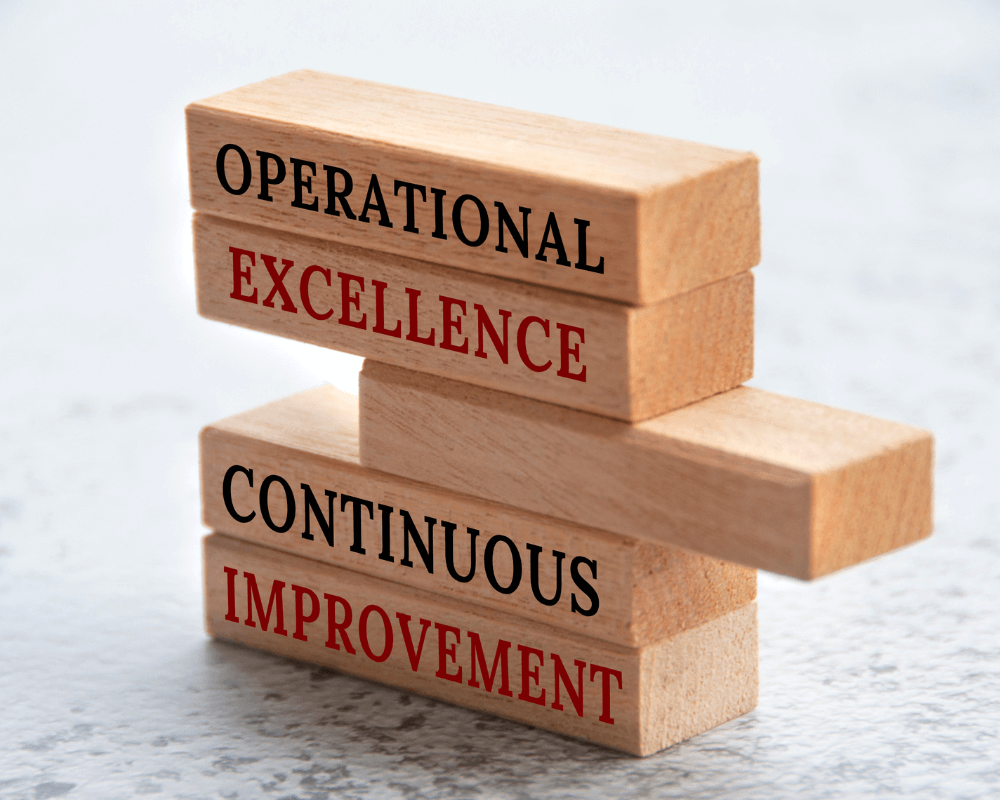Scaling to achieve your startup’s success is a critical phase in its development, marking the transition from early-stage survival to established success. At this point, you need to shift focus from simply finding a viable business model to amplifying your impact and reach. For a startup to escape the fragility of its beginnings, effective scaling strategies are not just beneficial but necessary.
Successful scaling hinges on the ability to magnify your operations without corresponding increases in costs. It means growing revenue at a faster rate than expenses and doing so sustainably. As a leader, you must understand the intricacies of your market, your product’s place within it, and the operational demands of growth. You are tasked with finding the optimal balance between rapid expansion and the quality that drew your customers in the first place.
To navigate the complexities of this critical growth stage, certain strategies are essential. Streamlining processes, maintaining flexibility, and building a strong team culture are a few cornerstones of robust scaling. Moreover, deploying capital efficiently and making data-driven decisions become increasingly significant as your venture grows. In managing these challenges effectively, you position your startup to thrive and stand out in a competitive ecosystem.
Building the foundation

In building a strong foundation for your startup, you must craft a scalable business model, establish clear objectives, and understand your market down to the finest details.
Crafting a scalable business model
To ensure longevity and success, your startup’s business model should be inherently scalable. This means creating a framework that supports growth without a proportional increase in resources. Begin by implementing a lean startup approach, focusing on developing a minimum viable product (MVP) that meets the needs of your target audience. Once you’ve validated your product-market fit, scale with efficiency in mind to maximize revenue.
Establishing clear objectives
Clear objectives guide your startup toward achievable targets. Start by outlining your vision and setting specific, measurable goals known as OKRs (Objectives and Key Results). This framework helps you set and track progress toward your milestones. Your objectives should align with creating a strong brand awareness and culture within your startup.
Understanding your market
Understanding your market is critical in aligning your product with customer needs. You need to evaluate the market size, market conditions, and competition to strategize effectively. Consider these factors to tailor your offerings:
- Target audience: Who are they? What do they need?
- Brand awareness: How well-known is your startup?
- Market conditions: Is the market favorable?
- Competition: Who else is meeting similar needs?
Your market understanding informs decisions that contribute to a sustainable and successful business trajectory.
Growth strategies

In the journey of scaling your startup, employing robust growth strategies is essential to enhance market share and sustain profitability.
Pursuing revenue scaling
Your priority should be establishing a scalable business model that supports revenue scaling. This often involves streamlining operations to reduce costs while increasing sales. Focus on high-margin products or services that can drive profits and ensure that your sales team aligns with the scalable approach.
Analyzing customer acquisition
To grow, understanding and optimizing your customer acquisition strategy is key. Utilize analytics to track where new customers come from and which channels yield the highest conversion rates. Tools like Customer Relationship Management (CRM) software can help capture and analyze this data effectively.
- Channels: Identify which channels (e.g., social media, search engines) are most effective at acquiring new customers.
- Content: Use engaging content to attract and retain customers, sizing up the competition’s approach.
- Conversions: Fine-tune your funnel to convert interest into sales.
Expansion through marketing
Crafting a marketing strategy that promotes expansion is critical. Diversify your marketing efforts across various channels to broaden your reach and adapt your approach based on customer feedback.
- Social media: Leverage platforms for targeted campaigns.
- SEO: Improve your content’s visibility on search engines.
- Email marketing: Keep your existing customer base engaged and informed.
Product development and innovation
Stay ahead in the market through continuous product development and innovation. Gathering customer feedback is invaluable for guiding development and identifying new opportunities within the market. Foster a culture of innovation to keep your offerings fresh and attractive.
- Feedback loop: Establish a process for collecting, analyzing, and acting on customer and market feedback.
- Innovation pipeline: Develop a robust pipeline for new ideas and make iteration a constant process.
Operational excellence

Operational excellence is pivotal in scaling your startup. It involves honing efficiency and ensuring your internal processes, team dynamics, and technology usage are aligned with your strategic goals.
Optimizing internal processes
Optimizing your internal processes aims to enhance performance and drive efficiency. Start by mapping out all your current processes and identifying areas where you can reduce waste or overlap. Introduce Key Performance Indicators (KPIs) to measure the success of these processes.
- Key steps to optimize your processes:
- Evaluate current workflows: Regularly examine your workflows to identify bottlenecks and areas for improvement.
- Automate tasks: Implement automation tools for repetitive tasks to save time and reduce errors.
- Continual improvement: Use metrics to drive process revisions, catering to evolving business needs.
Investing in people and culture
Your team is the cornerstone of your startup. To build a strong team, prioritize hiring individuals who align with your company’s values and culture. Promote team building to foster a sense of unity and shared purpose.
- Crucial aspects of people and culture investment:
- Comprehensive onboarding: Ensure new hires assimilate seamlessly into your company culture.
- Professional development: Offer training and growth opportunities to keep your team engaged and skilled.
- Open communication: Encourage feedback and open dialogue to maintain a transparent and trusting work environment.
Harnessing technology and data
Leverage cutting-edge technology and data to make data-driven decisions. Utilizing tools like Customer Relationship Management (CRM) systems or artificial intelligence can unlock new insights and streamline customer interactions.
- Ways to utilize technology and data:
- CRM systems: Adopt a CRM to manage customer relationships efficiently and personalize your service.
- Data analysis: Regularly analyze data to understand market trends and customer behavior.
- Artificial intelligence: Deploy AI to gain predictive insights and automate complex decision-making processes.
Sustainability and scale

Sustainable growth in a startup is a nuanced balance of scaling operations while maintaining long-term success. Your ability to manage financial health, retain customers, and adapt to market changes is critical.
Financial management for long-term success
Cash flow and profitability: To ensure sustainable growth, closely monitor your cash flow and maintain profitability. Proactive financial management involves:
- Regularly reviewing detailed financial statements
- Adjusting operations to improve cash flow
- Seeking funding with favorable terms to bolster your financial position
Resource allocation: Appropriately allocate resources to maximize efficiency and ensure that your scaling strategy does not outpace your funding capabilities.
Customer retention and service
Customer satisfaction: Your growth process hinges on customer retention. Achieve this by:
- Delivering exceptional customer service consistently
- Gathering and acting on customer feedback for continuous improvement
Service expansion: As you scale, expand your customer service capacity to maintain a high level of satisfaction, fostering a cycle of loyalty and repeat business.
Adapting to changing conditions
Market conditions: Regularly assess market conditions to stay ahead of industry trends. Your ability to adapt your scaling strategy to these conditions is a hallmark of sustainable growth.
- Continuously evaluate your product-market fit.
- Be prepared to pivot your business model in response to feedback and changes in market demand.
Maintaining a strong financial foundation, prioritizing customer retention, and remaining flexible in the face of changing conditions are central to achieving sustainability on a large scale.
Conclusion

As you embark on the entrepreneurship journey, remember that scaling your startup is a nuanced process that demands a strategic approach. Maintain a clear vision to guide your decisions and perseverance through the inevitable challenges.
- Strategies for growth: Adhere to proven strategies that align with your startup’s core values and market demands.
- Customer-centricity: Always prioritize customer needs and feedback to adapt your product or service for wider appeal.
Your roadmap to success involves careful planning and execution. To steer your business to new heights, balance innovation with calculated risk-taking.
- Team dynamics: Build a robust team culture that fosters collaboration and respects diversity in skills and perspectives.
- Resource management: Optimize the use of your resources to avoid overextension and maintain sustainable growth.
Be adaptive to change and receptive to new opportunities. Your flexibility can become a competitive advantage.
- Data-driven decisions: Utilize analytics and metrics to inform your scaling strategy, ensuring that your choices are grounded in real-world evidence.
- Scalability: Design systems and processes that can expand seamlessly with your growing customer base.
In conclusion, your focused efforts in applying these strategies can effectively drive your startup towards the success you envision. Stay confident in your direction, and leverage your knowledge to navigate the path of scaling with clarity and precision.
Empower your scaling journey with Quickly Hire
Quickly Hire streamlines the process of scaling your startup by providing access to a pool of vetted freelancers from around the globe. With the critical phase of scaling demanding efficient resource allocation and rapid growth, Quickly Hire offers a solution to swiftly augment your team with skilled professionals.
By tapping into this curated talent pool, startups can find freelancers with the expertise necessary to propel their growth trajectory without the time-consuming burden of traditional hiring processes. Whether in need of developers, marketers, designers, or any other specialized skill set, Quickly Hire ensures startups can swiftly onboard the talent they need to thrive in their scaling journey.

